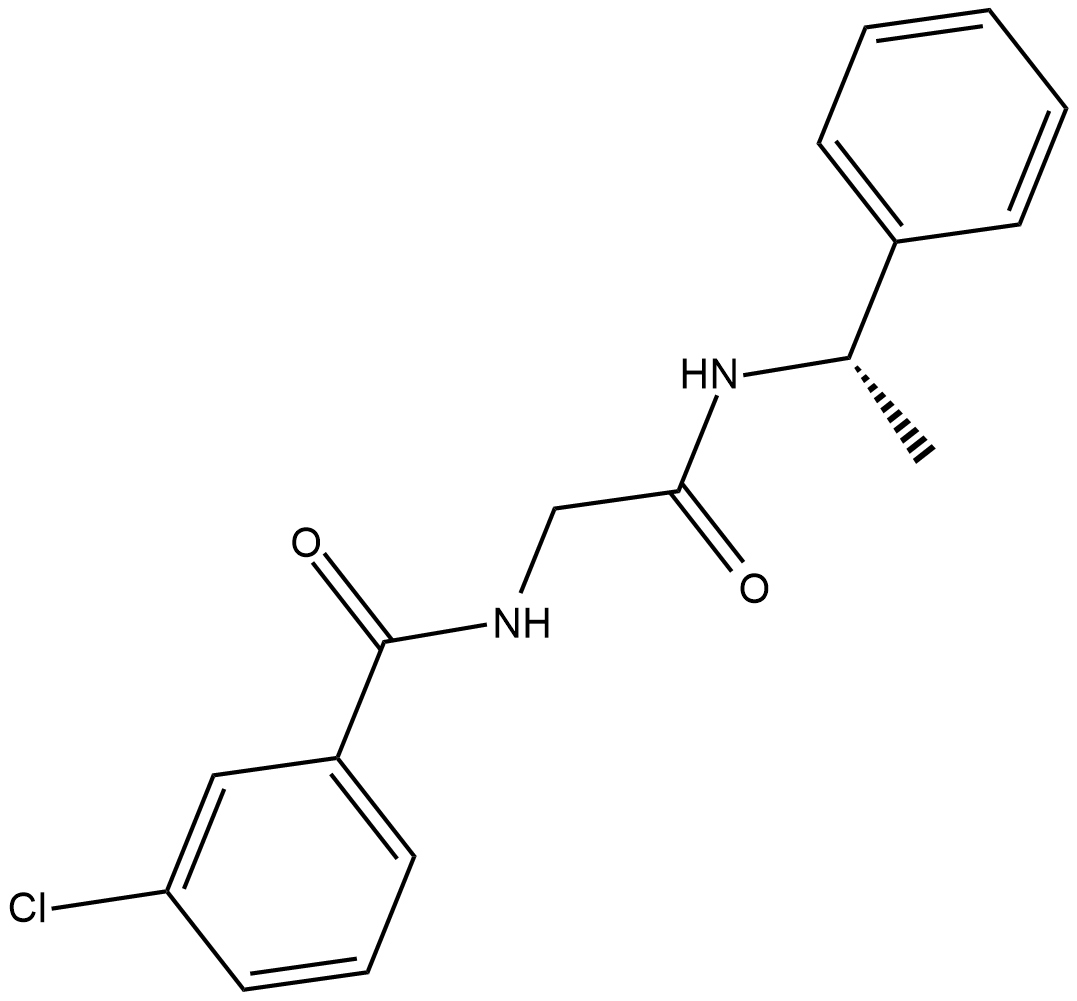JNJ-63533054 |
| Katalog-Nr.GC19209 |
JNJ-63533054 ist ein potenter, selektiver und oral aktiver GPR139-Agonist mit einem EC50-Wert von 16 nM fÜr humanes GPR139 (hGPR139).
Products are for research use only. Not for human use. We do not sell to patients.

Cas No.: 1802326-66-4
Sample solution is provided at 25 µL, 10mM.
JNJ-63533054 is a potent and selective agonist of hGPR139 with an EC50 = 16nM[1,2]. JNJ-63533054 is an excellent candidate to explore the unknown in vivo function of central GPR139[3]
JNJ-63533054 specifically activated human GPR139 in the calcium mobilization (EC50=16±6nM) and GTPγS binding (EC50=17±4nM) assays[1]. JNJ-63533054 effectively binds and acts as an agonist to zebrafish GPR139 with EC50 of 3.91nM[4]
JNJ-63533054 activated the rat and mouse GPR139 receptor with similar potency (rat EC50=63±24nM, mouse EC50=28±7nM)[1]. JNJ-63533054(oral dose of 10mg/kg) crossed the blood-brain barrier in both male mice and male rats, and the brain to plasma ratio was close to 1 in mouse and slightly higher in rat. In the marble burying test, JNJ-63533054(10mg/kg p.o.) produced a small anxiolytic-like effect, with no interaction with fluoxetine, and no effect in elevated plus maze (EPM)[3]. Administration of a high dose (1µg/g BW) of JNJ-6353305 had no effect on locomotor activity, and fear response, but fear-conditioned place avoidance was diminished; zebrafish treated with a lower dose(0.1µg/g BW) of GPR139 agonist exhibited avoidance to the contextual compartments[4]. JNJ-63533054(oral dose of 3-30mg/kg) dose-dependently reduced non-rapid eye movement (NREM) latency and increased NREM sleep duration without altering rapid eye movement (REM) sleep when acutely administered at the beginning of the light phase. This effect progressively dissipated upon 7-day repeated dosing[5]. Systemic administration of JNJ-63533054 (30mg/kg, p.o.) reversed compulsive-like alcohol drinking and decreases withdrawal-induced hyperalgesia in alcohol-dependent rats that exhibit symptoms of alcohol dependence[6]
References:
[1]. Liu C, Bonaventure P, et al. GPR139, an Orphan Receptor Highly Enriched in the Habenula and Septum, Is Activated by the Essential Amino Acids L-Tryptophan and L-Phenylalanine. Mol Pharmacol. 2015;88(5):911-925.
[2]. Dvorak CA, Coate H, et al. Identification and SAR of Glycine Benzamides as Potent Agonists for the GPR139 Receptor. ACS Med Chem Lett. 2015;6(9):1015-1018. Published 2015 Jul 20.
[3]. Shoblock JR, Welty N, et al. In vivo Characterization of a Selective, Orally Available, and Brain Penetrant Small Molecule GPR139 Agonist. Front Pharmacol. 2019;10:273. Published 2019 Mar 21.
[4]. Roy N, Ogawa S, et al. Habenula GPR139 is associated with fear learning in the zebrafish. Sci Rep. 2021;11(1):5549. Published 2021 Mar 10.
[5]. Wang L, Dugovic C, et al. Putative role of GPR139 on sleep modulation using pharmacological and genetic rodent models. Eur J Pharmacol. 2020;882:173256.
[6]. Kononoff J, Kallupi M, et al. Systemic and Intra-Habenular Activation of the Orphan G Protein-Coupled Receptor GPR139 Decreases Compulsive-Like Alcohol Drinking and Hyperalgesia in Alcohol-Dependent Rats. eNeuro. 2018;5(3):ENEURO.0153-18.2018. Published 2018 Jul 2.
Average Rating: 5 (Based on Reviews and 24 reference(s) in Google Scholar.)
GLPBIO products are for RESEARCH USE ONLY. Please make sure your review or question is research based.
Required fields are marked with *




















